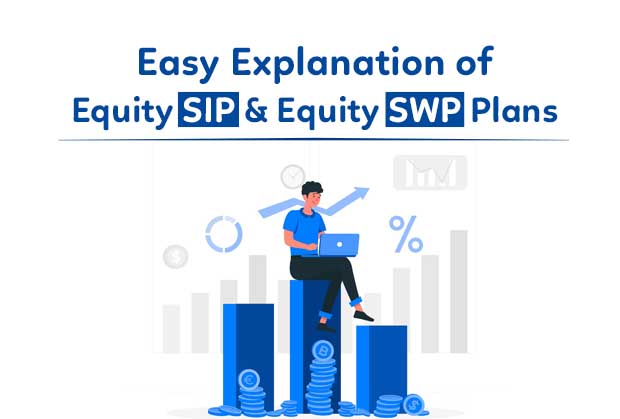The talk around algorithmic trading isn’t new. While it became yesterday’s talk in India much later than the US et al. , Indians are still interested by what algorithmic trading really is, and whether it’s doable for them, While some search for algorithmic trading for the proper reasons, they’re often intimidated by the plethora of complexity and technicalities that surround algorithmic trading. But not anymore. during this article, we’ll not only simplify algorithmic trading for first timers, but also demystify the misconceptions that surround it.
Lets begin with elephant within the room
Understanding algorithmic trading is easier if you’ll understand how it really works. At the guts of algorithmic trading is algorithms making trading decisions within the market. That’s right – these algorithms are usually market strategies that are coded into a language that computers can understand. These algorithms constantly sift through real time market data to look for conditions that has got to be met for a technique to return into effect – in other words, when programs see that each one conditions of a specified strategy are being met, they generate a sign to shop for , sell, or hold – counting on things . While some algo traders continue to automate these signals to form a program execute the trades on its own – et al. simply feed these signals into their trading account, in order that they will be executed with one tap.
Go beyond the method
So now we all know how algorithmic trading works. But knowing this is not enough to try to to algorithmic trading, is it? Then let’s dig deeper. For algorithmic trading to figure , you would like to be ready to feed market data to your program, then influence it by making trades. this is often where subsequent big concept comes in – that’s , APIs.
To interact with the stock exchange , your algorithmic trading program needn’t be built from scratch anymore. APIs, or Application Programming Interfaces are a paradigm in modern computing, that allow developers to show the specified functionalities of their own programs for others to use. for instance , if a broker features a digital trade execution engine that interacts with the stock exchanges, they will simply open certain functionalities like real-time market data streams, or the trade execution engine for others to access through their programs.
Trading APIs essentially allow you to perform critical trading functions – like accessing market data on stocks in real time, executing trades through an account, or managing account-related data digitally. SmartAPI is one such example of a trading API, that’s made available by Angel Broking for free of charge . With trading APIs, your path to truly doing algorithmic trading is formed much simpler – understand how, within the next section.
Trading APIs: simplifying algorithmic trading for everybody
Trading APIs simplify algorithmic trading for not only retail investors, but also those that want to create a business around digital trading. With trading APIs, one can simply specialise in converting their market strategies into algorithms that computers can understand, usually during a language of their own choice – it are often Java, Python, Go, NodeJS or maybe a statistical language like R. Once your strategies are implemented as algorithms, you would like to backtest them on historical data, and take them live if the results are satisfactory.
Trading APIs allow you to retrieve live market data, connect your trading accounts to your program, send trade signals to accounts and execute trades through these accounts. But to try to to all of this, you merely got to insert a bit of code into your program to form the said things happen – rather than writing the code from scratch. Tedious routines like authentication, mismatch in data structures, execution signals and account information are often implemented in one enter your script – a bit like plug-and-play. Sounds cool, right?
Well, as long as you’ll make it work for yourself that easily – when selecting a trading API to wet your feet, it’s crucial to seem for the subsequent characteristics:
It shouldn’t sink your money – aside from the value of executing trades, some trading APIs also charge a hard and fast fee for his or her users. search for free trading APIs, or run your calculations before you pay upfront money to access these functionalities. for instance , SmartAPI by Angel Broking is totally free.
It should be easy to know – Trading APIs provide you functionalities by inserting snippets of code into your program. Documentations like this explain what these pieces of code do, how they work, and where they slot in the puzzle. Before choosing your trading API, check out its documentation.
Don’t forget the facility of support – Some trading APIs simply provide functionalities to their users and documentation is meant to assist them navigate their thanks to the finishing line . But others provide further support beyond an in depth documentation – within the sort of helplines, support teams and forums. If you’re stuck at a drag in your specific environment, you ought to be ready to consult others, and the way they fixed an equivalent problem once they encountered it.
With these three things in mind, you’ll easily take your trading practice up a notch. Imagine not having to sift through the digitz on your own, and having a hawk’s eye on the market 24×7. within the past, algorithmic trading was a neighborhood of interest solely for institutional investors – but today, the sport is changing. it’s these trading APIs that have made algorithmic trading accessible to everyone. Pick wisely, and skim more about the way to found out your own algorithmic trading practice. Do some research, pick an honest trading API and begin building – algorithmic trading is not any longer as difficult because it wont to be zero.




